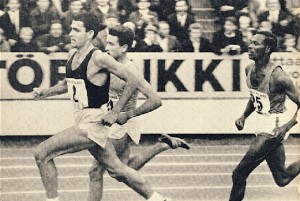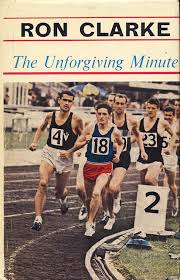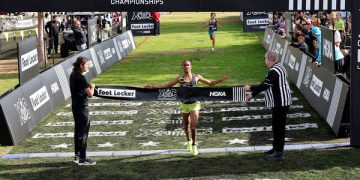As they always do, the social media world announced that Ron Clarke, one of the most remarkable distance runners of all times, had died. Clarke had had health issues for some years, and died of kidney failure per media sources in Australia.

Ron Clarke, Michel Jazy, Kip Keino, photo supplied
Ron Clarke, in my mind, was the greatest distance racer of the twentieth century. His gutty, front running style put him in constant chance of being caught by a fast finisher. Clarke would get himself in such great shape, that he could endure fast consistent miles during the toughest part of the 5000 meters and 10,000 meters-the middle portion of the race.
I was taken by the obituaries of Mr. Clarke. None of them mentioned that prior to 1956, when he was given the honor of lighting the Olympic cauldron, he had been a fine junior miler, running 4:06.5. A race that had taken on legendary status, the one where he fell and was spiked by John Landy, who stopped to check on him, then, 40 yards behind, caught Merv Lincoln and won the Australian national championships.
When Ron Clarke returned to running, he focused on training over hills and long runs, building his strength and endurance to levels most could not have conceived. In 1965, he ran 56 races, from two miles to one hour. Consider that Caleb Ndiku in 2014 ran 14 races, Galen Rupp ran 15 races.
In 1965, in a year when Ron Clarke ran 56 races, he broke 12 world records over distances from three miles to one hour. Eleven of those World Records were set in 44 days!
Ron Clarke was not a runner possessed of great speed. What Ron Clarke did was train himself to a level that he could run a very fast 800 meters mid race, break the field, and then, run away, taking the fans with him and the race to another level. His ability to push the pace, and break other runners was legendary. It was only in championship races, where he could not break one or two primed runners, that he did not fare well.
In my mind, his greatest record may have been his six mile and 10,000 meter record of 27:39.4 (26:47.0 en route for six miles), set on July 14, 1965. When I was able to ask Mr. Clarke about this race in the late 1980s, Clarke told me that, in order to get his 10,000m race, he had to promise to run a 3,000 meters race the very next day!
In that race, Ron Clarke broke the then world record by nearly 36 seconds, a huge amount. I believe it still should rank as a performance nearly as important as Bob Beamon’s world record long jump.
Clarke ran in the 1964 Olympics, taking the bronze in the 10,000 meters. In 1968, Clarke did not medal, running himself to exhaustion in Mexico City, and most probably (he believed so), damaging his heart.
One only has to think of Clarke on that cool Scandinavian nite in 1965, churning up the track with his strong stride and brutal pace. His front running, which would cost him many medals over his career, was how he ran world records from three miles to the one hour run.
The one hour run is another race to consider. Consider running all out for 59 minutes on a track, and then sprinting all out for the last minute. Clarke ran under five minute pace for sixty unforgiving minutes.
The great Emil Zatopek,( gold medalist at 10,000m in 1948, 1952, 5,000m silver in 1948, 5,000m gold in 1952, marathon winner in 1952) gave Ron Clarke one of his gold medals, because “you deserved it.”
In the summer of 1970, Ron Clarke ran his last season of races. He took the silver medal in the 10,000 meters in the Commonwealth Games, in a race that he was only half his normal racing self. In his last 10,000 meters, a race in Finland, he ran those last laps with Kenny Moore, the Munich 4th placer in the marathon and a fine writer. In Moore’s book, Best Efforts, he describes pushing Clarke onto the medal dias after that race so that fans who had come to love him and respect him could pay their respects.
In the place where distance runners go after they die, I see Ron Clarke, Emil Zatopek, Steve Prefontaine, and Willie Ritola running together, with no pain, swapping stories as runners do, enjoying one more run to the top of a ridge.
Larry Eder has had a 52-year involvement in the sport of athletics. Larry has experienced the sport as an athlete, coach, magazine publisher, and now, journalist and blogger. His first article, on Don Bowden, America's first sub-4 minute miler, was published in RW in 1983. Larry has published several magazines on athletics, from American Athletics to the U.S. version of Spikes magazine. He currently manages the content and marketing development of the RunningNetwork, The Shoe Addicts, and RunBlogRun. Of RunBlogRun, his daily pilgrimage with the sport, Larry says: "I have to admit, I love traveling to far away meets, writing about the sport I love, and the athletes I respect, for my readers at runblogrun.com, the most of anything I have ever done, except, maybe running itself." Also does some updates for BBC Sports at key events, which he truly enjoys. Theme song: Greg Allman, " I'm no Angel."
View all posts























